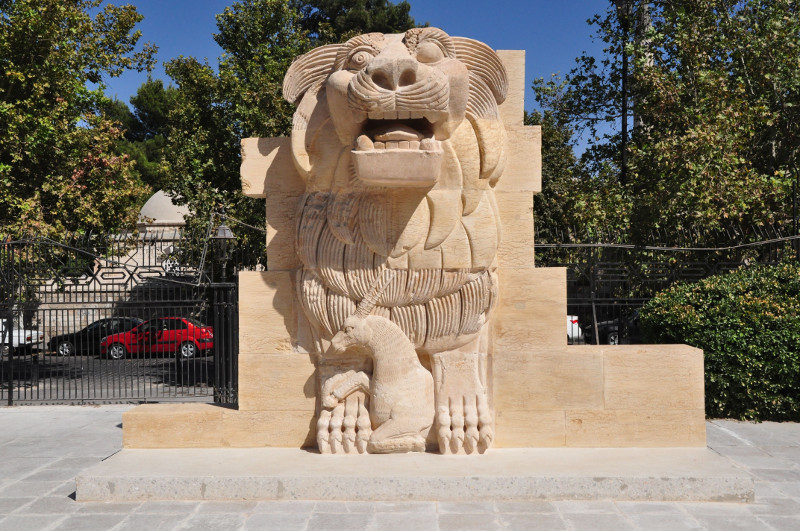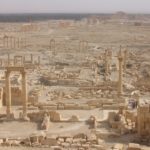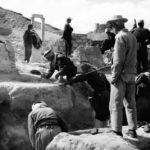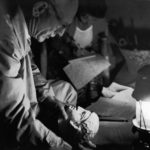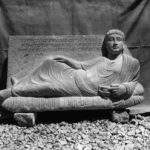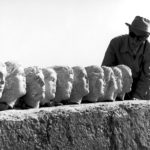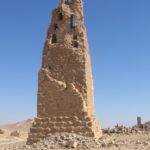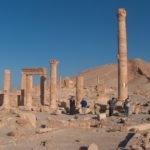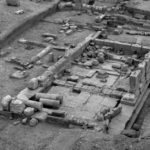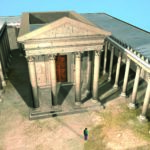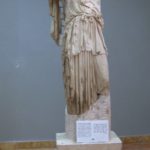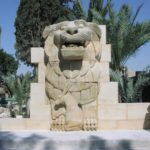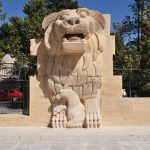Palmyra
Palmira, Tadmor
-
Typ stanowiska:
Stanowisko osadnicze: miasto antyczne i nekropola
Lokalizacja:
Syria
Oaza Palmyry w północnej części Pustyni Syryjskiej
Syryjska prowincja HomsDatowanie:
– Na podstawie wzmianek w źródłach tekstowych osada typu miejskiego w oazie sięga co najmniej początku 2 tysiąclecia p.n.e.
– Pozostałości rozpoznane archeologicznie od okresu rzymskiego do czasów wczesnoislamskich:
– Okres rzymski (I wiek p.n.e.–IV wiek n.e.)
– Okres bizantyjski (V–VII wiek)
– Okres wczesnoislamski (VII–IX wiek)
– Od X wieku osada ograniczyła się do zabudowań na terenie temenosu dawnej świątyni Bela
– W XIII wieku powstał arabski zamek na wzgórzu ponad ruinami miasta
Najciekawsze odkrycia:
– Świątynia Allat (I–IV wiek) z dwoma głównymi zabytkami rzeźbiarskimi: posągiem Ateny i płaskorzeźbą architektoniczną lwa-strażnika
– Budynek principiów – komendantury obozu rzymskiego z tzw. Świątynią Sztandarów
– Grobowce podziemne (hypogea) Zabdy i Alaine z doskonale zachowanymi reliefami grobowymi (II–III wiek)
– Dwie wieże grobowe Kitota i Atenata w Dolinie Grobów (1. połowa I wieku n.e.)
– Wielobarwna mozaika z sali bankietowej jednego z domów, nieopodal Wielkiej Kolumnady, z połowy III wieku n.e.
– Zespół bazylik chrześcijańskich z V–VI wieku.
Historia badań:
Badane przez misję CAŚ UW w latach:
1959–2011
Typ badań:
Wykopaliska
Kierownicy badań:
Kazimierz Michałowski (1959–1969),
Anna Sadurska (1970–1972),
Michał Gawlikowski (1973–2009),
Grzegorz Majcherek, Centrum Archeologii Śródziemnomorskiej UW (od 2010)
Instytucje współpracujące:
– Centrum Archeologii Śródziemnomorskiej Uniwersytetu Warszawskiego
– Syryjski Departament Starożytności
Opis stanowiska i badań:
Palmyra to antyczne bogate miasto karawanowe leżące w oazie pośrodku Pustyni Syryjskiej. Największą świetność miasto przeżywało w okresie Cesarstwa Rzymskiego (I-III wiek n.e.). Swój rozkwit Palmyra zawdzięczała dogodnemu położeniu na starożytnym „jedwabnym szlaku”, dzięki któremu miasto kontrolowało lukratywny handel pomiędzy krajami basenu Morza Śródziemnego, a Persją i Dalekim Wschodem.
Palmyra była wówczas gęsto zaludnionym miastem, z siatką regularnych ulic, imponującą Wielką Kolumnadą, monumentalnym łukiem, tetrapylonem z szesnastoma kolumnami z asuańskiego granitu, agorą otoczoną kolumnami, które zdobiły brązowe posągi zasłużonych obywateli, teatrem, termami i świątyniami: Nabu, patrona pisma i mądrości, Allat, bogini arabskiej, czczonej wśród koczowniczych plemion, Baalszamina – „Pana Niebios”. I wreszcie Bela – największą i najwspanialszą budowlą miasta, będącą symbolem jego bogactwa.
Kres samodzielności i prosperity Palmyry przyniosła nieudana próba sięgnięcia po władzę cesarską przez Zenobię, pierwszą arabską królową, zakończona jej klęską w 272 r,. kiedy to miasto zostało zdobyte przez cesarza Aureliana.
Pomimo zniszczeń miasto przetrwało i funkcjonowało nadal aż po okres wczesnego średniowiecza, ale ubożało i zmieniało swój wygląd. Powstały obóz legionowy, tak zwany Obóz Dioklecjana, nadał mu charakter garnizonu wojskowego. U schyłku antyku, wraz z chrześcijaństwem, pojawiły się tu kościoły, a z Islamem meczety, które z czasem zajęły miejsca tych ostatnich. Miasto upadało, znowu stawało się tylko małą, prowincjonalną osadą. Romantyczne, antyczne ruiny czekały na archeologów.
Polska misja wykopaliskowa Stacji Archeologii Śródziemnomorskiej Uniwersytetu Warszawskiego, którą kierował prof. Kazimierz Michałowski, pojawiła się w Palmyrze w maju 1959 r. Od tego czasu badania w wielu częściach miasta i na nekropoli przyniosły spektakularne odkrycia, istotne dla poznania historii i kultury materialnej jego mieszkańców.
Wśród nich należy wymienić: budynek principiow – komendantury obozu rzymskiego z tzw. Świątynią Sztandarów, świątynię bogini Allat z I-IV wieku n.e., zespół bazylik chrześcijańskich z V-VI wieku n.e., grobowce podziemne (hypogea) Zabdy i Alaine z doskonale zachowanymi reliefami grobowymi, dwie wieże grobowe, Kitota i Atenatana w tzw. Dolinie Grobów, wspaniałą, wielobarwną mozaikę z sali bankietowej jednego z domów, nieopodal Wielkiej Kolumnady, z połowy III wieku n.e. To niezwykle cenne znalezisko, bo mozaiki w Palmyrze są wielką rzadkością, przedstawia greckiego herosa Bellerofonta zabijającego Chimerę. Ponadto, ważnym ustaleniem naszych naukowców było, że arabski zamek na wzgórzu ponad miastem pochodzi z XIII wieku, a nie z wieku XVI jak dotąd uważano.
Liczne znaleziska z polskich wykopalisk, wśród nich wielka płaskorzeźba lwa, strzegącego sanktuarium Allat, unikatowy, marmurowy posąg bogini Ateny, złoty skarb złożony z monet i biżuterii, rzeźby i reliefy grobowe, jeszcze do 2015 roku stanowiły ważną część kolekcji palmyreńskiego muzeum archeologicznego. Wiele z tych zabytków niestety dziś już nie istnieje.
Taryfa Palmyreńska
Tuż przed przerwaniem badań w Palmyrze (sezony 2010–2011), spowodowanym konfliktem zbrojnym, polscy archeologowie odnaleźli miejsce, gdzie w starożytności stała słynna „Taryfa palmyreńska”. Była to wielka kamienna płyta, na której, w 137 roku, umieszczono dwujęzyczną inskrypcję w języku greckim i aramejskim, będącą tekstem ustawy celnej, mówiącą o handlu lokalnym i opłatach za towary sprowadzane do miasta.
Pocięta na cztery części, stela trafiła w 1904 r. do kolekcji Ermitażu w Petersburgu, jako dar tureckiego sułtana dla cara Rosji. Kiedy ją demontowano i wywożono nie sporządzono niestety żadnej dokumentacji. Rezultaty prac polskiej misji pozwoliły uzupełnić istotną lukę w wiedzy o tym zbytku.
Rezultaty badań:
Sezon po sezonie – „Newsletter PCMA”:
Wydarzenia związane z projektem:
kwiecień 2022: Promocja książki prof. Michała Gawlikowskiego „Tadmor–Palmyra”
październik 2021: Open Access: książka prof. Gawlikowskiego o świątyni Allat w Palmyrze
grudzień 2019: Prof. Michał Gawlikowski uhonorowany Nagrodą im. prof. Jana Zachwatowicza
grudzień 2019: Uroczystość wręczenia nagrody prof. Michałowi Gawlikowskiemu
październik 2017: Odrestaurowana płaskorzeźba Lwa Palmyreńskiego w Muzeum Narodowym w Damaszku
lipiec 2017: Lew Palmyreński na sesji UNESCO w Krakowie
maj 2017: Lew palmyreński nowym logo CAŚ UW
kwiecień 2017: Wystawa w siedzibie UNESCO w Paryżu: „Against the Sands of Time. Documentation and Reconstruction of the World Heritage – the Polish Experience”
maj 2016 Nasi specjaliści ponownie pracowali w Palmyrze
marzec-kwiecień 2016: Wystawa: „W cieniu wojny. Zabytki Syrii i Iraku w badaniach Centrum Archeologii Śródziemnomorskiej Uniwersytetu Warszawskiego”. 31 marca – 21 kwietnia 2016, Pałac Kazimierzowski, Kampus Główny UW
kwiecień 2016: Konferencja: “Polacy na Bliskim Wschodzie”, sesja specjalna: “Endangered Heritage. Archaeological Research and Conservation in Syria and Iraq”, 1. kwietnia 2016, Instytut Archeologii Uniwersytetu Warszawskiego
kwiecień 2016: Konferencja „Życie w Palmyrze, życie dla Palmyry”
kwiecień 2016: Konferencja prasowa na temat Palmyry
kwiecień 2016: Specjaliści z CAŚ UW odwiedzili Palmyrę
sierpień 2015: Profesor Michał Gawlikowski o tragedii Palmyry
sierpień 2015: Khaled el Assad (1934-2015)
grudzień 2010: Konferencja naukowa „Palmyra – królowa pustyni. 50 lat polskich wykopalisk w Palmyrze 1959–2009”
czerwiec 2010: Jedwab i klejnoty – palmyreńskie wyprawy handlowe
czerwiec 2010: Oaza Wyobraźni – wystawa z okazji 50-lecia polskich badań archeologicznych w Palmyrze
Gawlikowski, M. (2021). Tadmor–Palmyra. A Caravan City between East and West, (=Bibliotheca Artibus et Historiae), Krakow: IRSA.
Gawlikowski, M. (2019). Roman Housing in Palmyra, in: G. Bąkowska‑Czerner, R. Czerner (eds), Greco‑Roman Cities at the Crossroads of Cultures, Oxford: Archaeopress, 103–108.
Majcherek, G. (2019). Filling the gap: Mediterranean amphorae in Late antique Palmyra, Syria, 96, 395–418 DOI : https://doi.org/10.4000/syria.10620.
Gawlikowski, M. (2017). Gods and Places: Local and Oecumenical Cults in Syria in the Imperial Period, in: R. Raja (ed.), Contextualising the Sacred in the Hellenistic and Roman Near East. Religious Identities in Local, Regional and Imperial Settings, Brepols, Turnhout, 11–29.
Gawlikowski, M. (2017). Le sanctuaire d’Allat à Palmyre (=PAM Monograph Series 8), Warsaw: PCMA, WUP https://doi.org/10.31338/uw.9788323535010 .
Gawlikowski, M. (2016). The portraits of the Palmyrene royalty. In A. Kropp and R. Raja (eds), The world of Palmyra (pp. 126–134). Copenhagen: Det Kongelige Danske Videnskabernes Selskab.
Gawlikowski, M. (2016). Trade Across Frontiers: Foreign Relations of a Caravan City, in: J.Ch. Meyer, E.H. Selund, N. Affinset (eds), Palmyrena. City, Hinterland and Caravan Trade between Orient and Occident, Oxford: Archaeopress, 19–28.
Wielgosz-Rondolino, D. (2016). Orient et Occident unis par enchantement dans la pierre sculptée. La sculpture figurative de Palmyre. In M. Maqdissi and É. Ishaq (eds), La Syrie et le désastre archéologique du Proche-Orient “Palmyre cité martyre” (pp. 65–82). Beyrouth: Beiteddine Art Festival.
Wielgosz-Rondolino, D. (2016). Palmyrene portraits from the temple of Allat. New evidence on artists and workshops. In A. Kropp and R. Raja (eds), The world of Palmyra (pp. 166–179). Copenhagen: Det Kongelige Danske Videnskabernes Selskab.
Gawlikowska, K. (2015). A new look on some old glass finds from Palmyra. Polish Archaeology in the Mediterranean, 24/1, 779–790.
Krzyżanowska, A. and Gawlikowski, M. (2014). Monnaies des fouilles polonaises á Palmyre (=Studia Palmyreńskie 13). Warsaw: University of Warsaw Press.
Gawlikowski, M. (2014). Palmyra: reexcavating the site of the Tariff (fieldwork in 2010 and 2011). Polish Archaeology in the Mediterranean, 23/1, 415–430.
Gawlikowski, M. (2013). In the footsteps of Prince Abamelek in Palmyra. In M. Gawlikowski and G. Majcherek (eds), Fifty years of Polish excavations in Palmyra 1959–2009: International conference, Warsaw, 6–8 December 2010 (=Studia Palmyreńskie 12) (pp. 87–96). Warsaw: University of Warsaw Press.
Gawlikowski, M. and Majcherek, G. (eds). (2013). Fifty years of Polish excavations in Palmyra 1959–2009: International conference, Warsaw, 6–8 December 2010 (=Studia Palmyreńskie 12). Warsaw: University of Warsaw Press.
Jastrzębowska, E. (2013). La christianisation de Palmyre: l’exemple du temple de Bel. In M. Gawlikowski and G. Majcherek (eds), Fifty years of Polish excavations in Palmyra 1959–2009: International conference, Warsaw, 6–8 December 2010 (=Studia Palmyreńskie 12) (pp. 177–192). Warsaw: University of Warsaw Press.
Juchniewicz, K. (2013). Late Roman fortifications in Palmyra. Studia Palmyreńskie, 12, 193–202.
Juchniewicz, K. and Żuchowska, M. (2013). Remarks on water supply in Palmyra. Results of a survey in 2010. Polish Archaeology in the Mediterranean, 22, 341–350.
Kubiak, A. (2013). Des “dieux bons” à Palmyre. In M. Gawlikowski and G. Majcherek (eds), Fifty years of Polish excavations in Palmyra 1959–2009: International conference, Warsaw, 6–8 December 2010 (=Studia Palmyreńskie 12) (pp. 227–234). Warsaw: University of Warsaw Press.
Majcherek, G. (2013). Excavating the basilicas. In M. Gawlikowski and G. Majcherek (eds), Fifty years of Polish excavations in Palmyra 1959–2009: International conference, Warsaw, 6–8 December 2010 (=Studia Palmyreńskie 12) (pp. 251–268). Warsaw: University of Warsaw Press.
Wielgosz, D. (2013). Coepimus et lapide pingere: marble decoration from the so-called baths of Diocletian in Palmyra. In M. Gawlikowski and G. Majcherek (eds), Fifty years of Polish excavations in Palmyra 1959–2009: International conference, Warsaw, 6–8 December 2010 (=Studia Palmyreńskie 12) (pp. 319–332). Warsaw: University of Warsaw Press.
Żuchowska, M. (2013). Palmyra and the far eastern trade. In M. Gawlikowski and G. Majcherek (eds), Fifty years of Polish excavations in Palmyra 1959–2009: International conference, Warsaw, 6–8 December 2010 (=Studia Palmyreńskie 12) (pp. 381–388). Warsaw: University of Warsaw Press.
Gawlikowski, M. (2012). Le Tarif de Palmyre et le temple de Rab‘asirê. Comptes rendus de l’Académie des inscriptions et belles-lettres, 2012(2), 765–780.
Majcherek, G. (2012). Polish Archaeological Mission to Palmyra. Seasons 2008 and 2009. Polish Archaeology in the Mediterranean, 21, 459–479.
Gawlikowski, M. (2010). Odainat of Palmyra between Rome and Persia. In E. Dąbrowa (ed.), Hortus historiae: Studies in honour of Professor Józef Wolski on the 100th anniversary of his birthday (pp. 467–479). Kraków: Historia Iagellonica.
Gawlikowski, M. (2010). Palmyra. Preliminary report on the forty-fifth season of excavations. Polish Archaeology in the Mediterranean, 19, 517–526.
Gawlikowski, M. (2010). The Roman army in Palmyra under Tiberius. Studia Palmyreńskie, 11, 49–54.
Gawlikowski, M. and al-As’ad, K. (2010). The Imperial cult in Palmyra under the Antonines. Studia Palmyreńskie, 11, 43–48.
Gawlikowski, M. and Żuchowska, M. (2010). La mosaïque de Bellérophon. Studia Palmyreńskie, 11, 9–42.
Juchniewicz, K., al-As’ad, K., and al Hariri, K. (2010). The defense wall in Palmyra after recent Syrian excavations. Studia Palmyreńskie, 11, 55–74.
Wielgosz, D. (2010). La sculpture en marbre à Palmyre. Studia Palmyreńskie, 11, 75–106.
Żuchowska, M. (2010). The Western Gate at Palmyra. Studia Palmyreńskie, 11, 107–114.
Gawlikowski, M. (2009). A lonely hunter from Palmyra. In J.M. Burdukiewicz (ed.), Understanding the past: Papers offered to Stefan K. Kozłowski (pp. 123–129). Warsaw: Center for Research on the Antiquity of Southeastern Europe. University of Warsaw.
Gawlikowski, M. (2008). Palmyra. Excavations in the Allat sanctuary, 2005–2006. Polish Archaeology in the Mediterranean, 18, 531–541.
Gawlikowski, M. (2008). Palmyra in the Early Islamic times. In K. Bartl and A.A.-R. Moaz (eds), Residences, castles, settlements: Transformation processes from late antiquity to Early Islam in Bilad al-Sham. Proceedings of the International Conference held at Damascus, 5–9 November 2006 (=Orient-Archäologie 24) (pp. 89–96). Rahden/Westf.: M. Leidorf.
Gawlikowski, M. (2008). The statues of the sanctuary of Allat in Palmyra. In Y.Z. Eliav, E.A. Friedland, and S. Herbert (eds), The sculptural environment of the Roman Near East: reflections on culture, ideology, and power (=Interdisciplinary Studies in Ancient Culture and Religion 9) (pp. 397–411). Leuven–Dudley, MA: Peeters.
Gawlikowski, M. (2007). Beyond the colonnades. The housing architecture in Palmyra. In K. Galor and T. Waliszewski (eds), From Antioch to Alexandria: Recent studies in domestic architecture (pp. 79–93). Warsaw: Institute of Archaeology, University of Warsaw.
Żuchowska, M. (2007). Palmyra. Excavations 2002–2005 (insula E by the Great Colonnade). Polish Archaeology in the Mediterranean, 17, 439–450.
Gawlikowski, M. (2005). Palmyra 2004. Polish Archaeology in the Mediterranean, 16, 461–465.
Kaim, B. (2005). Palmyrenes and Parthian costume. In P. Bieliński and F.M. Stepniowski (eds), Aux pays d’Allat: mélanges offerts à Michał Gawlikowski (pp. 113–122). Warszawa: Instytut Archeologii, Uniwersytet Warszawski.
Krogulska, M. (2005). A lamp from the cella of the temple of Allat in Palmyra. In P. Bieliński and F.M. Stepniowski (eds), Aux pays d’Allat: mélanges offerts à Michał Gawlikowski (pp. 123–129). Warszawa: Instytut Archeologii, Uniwersytet Warszawski.
Majcherek, G. (2005). More churches from Palmyra – an inkling of the late antique city. In P. Bieliński and F.M. Stepniowski (eds), Aux pays d’Allat: mélanges offerts à Michał Gawlikowski (pp. 141–150). Warszawa: Instytut Archeologii, Uniwersytet Warszawski.
Markowski, B. (2005). The lion of Allat in Palmyra. New museum display project. Polish Archaeology in the Mediterranean, 16, 470–474.
Trochimowicz, A. and Markowski, B. (2005). Restoration work in the Palmyra Museum in 2004. Polish Archaeology in the Mediterranean, 16, 466–469.
Wielgosz, D. (2005). La présence de marbres précieux a Palmyre. In P. Bieliński and F.M. Stepniowski (eds), Aux pays d’Allat: mélanges offerts à Michał Gawlikowski (pp. 303–323). Warszawa: Instytut Archeologii, Uniwersytet Warszawski.
Żuchowska, M. (2005). Palmyre – cité caravaniere? In P. Bieliński and F.M. Stepniowski (eds), Aux pays d’Allat: mélanges offerts à Michał Gawlikowski (pp. 325–347). Warszawa: Instytut Archeologii, Uniwersytet Warszawski.
Gawlikowski, M. (2004). Palmyra. Season 2003, preliminary report. Polish Archaeology in the Mediterranean, 15, 313–324.
Wielgosz, D. (2004). Osservazioni sul sarcofago palmireno. In M. Fano Santi (ed.), Studi di archeologia in onore di Gustavo Traversari (pp. 929–962). Roma: Bretschneider.
Gawlikowski, M. (2003). Palmyra: from a tribal federation to a city. In K.S. Freyberger, A. Henning, and H. von Hesberg (eds), Kulturkonflikte im Vorderen Orient an der Wende vom Hellenismus zur römischen Kaiserzeit (=Orient-Archäologie 11) (pp. 7–10). Rahden/Westf.: M. Leidorf.
Gawlikowski, M. (2003). Palmyra. Season 2002. Polish Archaeology in the Mediterranean, 14, 279–290.
Gawlikowski, M. (2003). Un nouveau temple d’Allat dans une inscription revisitée. Semitica, 51, 57–64.
Żuchowska, M. (2003). Test trench in the street of the Great Colonnade. Polish Archaeology in the Mediterranean, 14, 291–294.
Gawlikowski, M. (2002). Palmyra. Season 2001. Polish Archaeology in the Mediterranean, 13, 257–269.
Wielgosz, D., Lazzarini, L., Turi, B., and Antonelli, F. (2002). The origin of the marble sculptures from Palmyra. In L. Lazzarini (ed.), Interdisciplinary studies on ancient stone: Asmosia VI . Proceedings of the sixth international conference of the Association for the Study of Marble and Other Stones in Antiquity, Venice, June 15–18, 2000 (pp. 389–402). Padua: Bottega d’Erasmo.
Wielgosz, D. (2001). Sarcofagi attici a Palmira. Rivista di Archeologia, 25, 167–176.
Gawlikowski, M. (2000). Palmyra. Season 1999. Polish Archaeology in the Mediterranean, 11, 249–260.
Wielgosz, D. (2000). Le sculture in marmo proconnesio a Palmira. Rivista di Archeologia, 24, 96–105.
Gawlikowski, M. (1999). Palmyra: Excavations, 1998. Polish Archaeology in the Mediterranean, 10, 189–196.
Gawlikowski, M. (1998). Palmyra: Excavations 1997. Polish Archaeology in the Mediterranean, 9, 197–211.
al-As’ad, K. and Gawlikowski, M. (1997). The inscriptions in the museum of Palmyra: A catalogue. Palmyre; Warsaw.
Barański, M. (1997). The western aqueduct in Palmyra. Studia Palmyreńskie, 10, 7–17.
Daszkiewicz, M. and Raabe, J. (1997). Glass from Palmyra in laboratory studies. Polish Archaeology in the Mediterranean, 8, 199–202.
Gawlikowski, M. (1997). L’habitat à Palmyre de l’Antiquité au Moyen-Age. In C. Castel, M. al-Maqdissi, and F. Villeneuve (eds), Les maisons dans la Syrie antique du IIIe millénaire aux débuts de l’Islam: pratiques et représentations de l’espace domestique. Actes du colloque international, Damas, 27–30 juin 1992 (=Bibliothèque archéologique et historique 150) (pp. 161–166). Beirut: Institut français du Proche-Orient.
Gawlikowski, M. (1997). Palmyra, excavations 1996. Polish Archaeology in the Mediterranean, 8, 191–197.
Gawlikowski, M. and al-As’ad, K. (1997). Inscriptions de Palmyre nouvelles et revisitées. Studia Palmyreńskie, 10, 23–38.
Kowalski, S.P. (1997). Late Roman Palmyra in literature and epigraphy. Studia Palmyreńskie, 10, 39–62.
Pietrzykowski, M. (1997). Adyta świątyń palmyreńskich: studium funkcji i formy (Adyta of the Palmyrene temples: a study of function and form). Warsaw: Archet.
Scholl, T. and Taha, A. (1997). Sounding in the courtyard of the Saray in Palmyra (1986). Studia Palmyreńskie, 10, 63–68.
Wielgosz, D. (1997). Funeralia Palmyrena. Studia Palmyreńskie, 10, 69–77.
Barański, M. (1996). Development of the building techniques in Palmyra. Annales Archéologiques Arabes Syriennes, 42, 379–384.
Byliński, J. (1996). Palmyra. Arab Castle 1995. Polish Archaeology in the Mediterranean, 7, 147–159.
Gawlikowski, M. (1996). Palmyra. Excavations 1995. Polish Archaeology in the Mediterranean, 7, 139–146.
Gawlikowski, M. (1996). The Athena of Palmyra. Archeologia, 47, 21–32.
Kowalski, S.P. (1996). Doubtful Christian reutilization of the Baalshamin temple in Palmyra. Damaszener Mitteilungen, 9, 217–226.
Barański, M. (1995). Building techniques in Palmyra. In Studies in the history and archaeology of Jordan V. Art and technology throughout the ages (pp. 231–233). Amman: Department of Antiquities of Jordan.
Byliński, J. (1994). Survey of the Arab Castle in Palmyra, 1993. Polish Archaeology in the Mediterranean, 5, 144–153.
Daszkiewicz, M. (1994). An archaeometric study of ceramic and clay samples from Palmyra. Studia Palmyreńskie, 9, 1–4.
Gawlikowska, K. and al-As’ad, K. (1994). The collection of glass vessels in the Museum of Palmyra. Studia Palmyreńskie, 9, 5–36.
Gawlikowski, M. (1994). Palmyra. Polish Archaeology in the Mediterranean, 5, 133–143.
Gawlikowski, M. (1994). Palmyra as a trading centre. Iraq, 56, 27–33.
Kowalski, S.P. (1994). The Praetorium of the Camp of Diocletian in Palmyra. Studia Palmyreńskie, 9, 39–70.
Witecka, A. (1994). Catalogue of jewellery found in the Tower-tomb of Atenatan in Palmyra. Studia Palmyreńskie, 9, 71–91.
Gawlikowski, M. (1993). Palmyra 1992. Polish Archaeology in the Mediterranean, 4, 111–118.
Gawlikowski, M. (1992). Palmyra 1991. Polish Archaeology in the Mediterranean, 3, 68–76.
Barański, M. (1991). Opus Palmyrenum. Damaszener Mitteilungen, 5, 59–63.
Byliński, J. (1991). The Arab Castle in Palmyra. Polish Archaeology in the Mediterranean, 2, 91–93.
Gawlikowski, M. (1991). Palmyra. Polish Archaeology in the Mediterranean, 2, 85–90.
Gawlikowski, M. (1990). Le premier temple d’Allat. In P. Matthiae, M.N. van Loon, and H. Weiss (eds), Resurrecting the past: A joint tribute to Adnan Bounni (=Uitgaven van het Nederlands Historisch-Archaeologisch Instituut te İstanbul 67) (pp. 101–108). Istanbul: Nederlands Historisch-Archaeologisch Instituut.
Gawlikowski, M. (1990). Les dieux de Palmyre. In W. Haase (ed.), Aufstieg und Niedergang der Römischen welt II.18.4. Principat. Religion (Heidentum: Die religiösen Verhältnisse in den Provinzen (Forts.)) (pp. 2605–2658). Berlin: de Gruyter.
Gawlikowski, M. (1990). Palmyra. Polish Archaeology in the Mediterranean, 1, 37–44.
Gawlikowski, M. (1988). Le commerce de Palmyre sur terre et sur eau. In L’Arabie et ses mers bordières I. Itinéraires et voisinages. Séminaire de recherche 1985–1986 (=Travaux de la Maison de l’Orient 16/1)(pp. 163–172). Lyon: Maison de l’Orient et de la Méditerranée.
al-As’ad, K. and Gawlikowski, M. (1986–1987). New honorific inscriptions in the Great Colonnade of Palmyra. Annales Archéologiques Arabes Syriennes, 36–37, 164–171.
Gawlikowski, M. (1986). Les comptes d’un homme d’affaires dans une tour funéraire à Palmyre. Semitica, 36, 87–99.
Gawlikowski, M. (1985). Świątynia Allat w Palmyrze. Wstępny raport z wykopalisk 1974–1976 (The temple of Allat in Palmyra. Preliminary report from the 1974–1976 excavations). Studia Palmyreńskie, 8, 5–25.
Krogulska, M. (1985). A ceramic workshop in the western quarter of Palmyra. Studia Palmyreńskie, 8, 43–67.
Makowski, K. (1985). La sculpture funéraire palmyrénienne et sa fonction dans l’architecture sépulcrale. Studia Palmyreńskie, 8, 69–117.
Makowski, K. (1985). Recherches sur le banquet miniaturisé dans l’art funéraire de Palmyre. Studia Palmyreńskie, 8, 119–130.
Meyza, H. (1985). Remarks on the western aqueduct of Palmyra. Studia Palmyreńskie, 8, 27–33.
Sadurska, A. and Makowski, K. (1985). Les sculptures palmyréniennes provenant des fouiles polonaises en 1972 dans le “Tombeau Turriforme”: (l’Enceinte de Dioclétien). Studia Palmyreńskie, 8, 35–41.
Starcky, J. and Gawlikowski, M. (1985). Palmyre: édition revue et augmentée des nouvelles découvertes. Paris: Librairie d’Amérique et d’Orient.
Gawlikowski, M. (1984). Les principia de Dioclétien : “Temple des Enseignes” (=Palmyre 8). Varsovie: Éditions Scientifiques de Pologne.
Krogulska, M. (1984). Le forum. In M. Gawlikowski, Les principia de Dioclétien : “Temple des Enseignes” (=Palmyre 8) (pp. 70–91). Varsovie: Éditions Scientifiques de Pologne.
Gawlikowski, M. (1983). Le sanctuaire d’Allat à Palmyre : aperçu préliminaire. Annales Archéologiques Arabes Syriennes, 33, 179–198.
Gawlikowski, M. (1983). Palmyre et l’Euphrate. Syria, 60(1), 53–68.
Gawlikowski, M. (1983). Réflexions sur la chronologie du sanctuaire d’Allat à Palmyre. Damaszener Mitteilungen, 1, 59–68.
Gawlikowski, M. (1983). Une tête d’Athéna. Études et Travaux, 13, 89–97.
Gąssowska, B. (1982). Maternus Cynegius, praefectus praetorio Orientis and the destruction of the Allat Temple in Palmyra. Archeologia, 33, 107–123.
Gawlikowski, M. and Pietrzykowski, M. (1980). Sculptures du temple de Baalshamin à Palmyre. Syria, 57(2), 421–452.
Gawlikowski, M. (1977). Le temple d’Allat à Palmyre. Revue Archéologique, 2, 253–274.
Sadurska, A. (1977). Le tombeau de famille de ʻAlainê (=Palmyre 7). Warsaw: PWN-Éditions scientifiques de Pologne.
Gawlikowski, M. (1976). Allat et Baalshamîn. In Mélanges d’histoire ancienne et d’archéologie offerts à Paul Collart (=Cahiers d’archéologie romande de la Bibliothèque historique vaudoise 5) (pp. 197–203). Lausanne: Bibliothèque historique vaudoise.
Gawlikowski, M. (1976). Le Camp de Dioclétien: bilan préliminaire. In Palmyre: bilan et perspectives (pp. 153–163). Strasbourg: A.E.C.R.
Brykczyński, P. (1975). Astrologia w Palmyrze (Astrology in Palmyra). Studia Palmyreńskie, 6–7, 47–109.
Gawlikowski, M. (1975). Recueil d’inscriptions palmyréniennes provenant de fouilles syriennes et polonaises récentes à Palmyre. Mémoires présentés par divers savants étrangers à l’Académie, 16(1), 263–377.
Gawlikowski, M. (1975). Remarks on the ramparts of Palmyra. Studia Palmyreńskie, 6–7, 45–46.
Gawlikowski, M. (1975). Trois inscriptions funéraires du Camp de Dioclétien. Studia Palmyreńskie, 6–7, 127–133.
Makowski, K. (1975). Bogowie i meharyści (Gods and meharists). Studia Palmyreńskie, 6–7, 137–149.
Sadurska, A. (1975). Palmyre 1972. Tombeaux dans l’enceinte du Camp de Dioclétien. Études et Travaux, 8, 367–376.
Sadurska, A. (1975). Une nouvelle tessère de Palmyre. Studia Palmyreńskie, 6–7, 121–126.
Sadurska, A. (1975). Wykopaliska polskie w Palmyrze 1970: „Świątynia Sztandarów” (Polish excavations in Palmyra in 1970: “Temple of the Standards”). Studia Palmyreńskie, 6–7, 111–119.
Gawlikowski, M. (1974). Le tadmoréen. Syria, 51(1), 91–103.
Krzechowicz, G. (1974). Uwagi nad genezą świątyń palmyreńskich (Remarks on the origins of Palmyrene temples). Studia Palmyreńskie, 5, 45–82.
Łukasiak, E. (1974). Ikonografia Yarhibôla (The iconography of Yarhibôl). Studia Palmyreńskie, 5, 7–44.
Myśliwiec, K. (1974). Sculptures trouvées à Palmyre par la mission archéologique polonaise en 1968 et 1969. Studia Palmyreńskie, 5, 83–96.
Wais, J. (1974). Malakbel and Melqart. Studia Palmyreńskie, 5, 97–101.
Gawlikowski, M. (1973). Le temple palmyrénien: étude d’épigraphie et de topographie historique (=Palmyre 6). Varsovie: Éditions Scientifique de Pologne.
Gawlikowski, M. (1973). Liturges et custodes. Sur quelques inscriptions palmyréniennes. Semitica, 23, 113–124.
Gawlikowski, M. (1971). Inscriptions de Palmyre. Syria, 48(3), 407–426.
Daszewski, W.A. and Kołątaj, W. (1970). Wstępny raport z wykopalisk Polskiej Misji Archeologicznej w Palmyrze w 1968 r. (Preliminary report from the excavations of Polish Archaeological Mission to Palmyra in 1968). Studia Palmyreńskie, 4, 69–78.
Gawlikowski, M. (1970). Dwie palmyreńskie rzeźby nagrobne w zbiorach polskich (Two Palmyrene funerary sculptures in Polish collections). Studia Palmyreńskie, 4, 87–92.
Gawlikowski, M. (1970). Monuments funéraires de Palmyre (=Travaux du Centre d’archéologie méditerranéenne de l’Académie polonaise des sciences 9). Warszawa: Państwowe Wydawnictwo Naukowe.
Kołątaj, W. (1970). Wstępny projekt konsolidacji tzw. Świątyni Sztandarów Obozu Dioklecjana w Palmyrze (Preliminary project of consolidation of the so-called Temple of the Standards of the Camp of Diocletian in Palmyra). Studia Palmyreńskie, 4, 79–85.
Wais, J. (1970). Problemy ikonografii Malakbela (Problems of the iconography of Malakbel). Studia Palmyreńskie, 4, 5–67.
Gawlikowski, M. (1969). Deux inscriptions latines de Palmyre. Studia Palmyreńskie, 3, 71–76.
Gawlikowski, M. (1969). Rodzina Elahbela (The family of Elahbel). Studia Palmyreńskie, 3, 47–58.
Gawlikowski, M. (1969). Trzy grobowce palmyreńskie (Three Palmyrene tombs). Studia Palmyreńskie, 3, 59–69.
Gawlikowski, M. (1969). Wykopaliska w Palmyrze ostatnich lat (Excavations in Palmyra in recent years). Studia Palmyreńskie, 3, 105–109.
Hirsch, O. (1969). Wstępne badania nad ceramiką palmyreńską: w oparciu o materiał z wykopalisk polskich w Palmyrze 1966 (Preliminary studies on Palmyrene pottery based on material from Polish excavations in Palmyra in 1966). Studia Palmyreńskie, 3, 85–99.
Niepokólczycki, M. (1969). Pomiary geodezyjne terenu „Świątyni sztandarów” w Palmyrze (Geodetic measurements in the “Temple of the Standards” in Palmyra). Studia Palmyreńskie, 3, 77–83.
Sołtan, A. (1969). Ikonografia meharystów palmyreńskich (The iconography of Palmyrene meharists). Studia Palmyreńskie, 3, 5–46.
Filarska, B. (1967). Studia nad dekoracjami architektonicznymi Palmyry (Studies on the architectural decorations of Palmyra). Studia Palmyreńskie, 2, 1–157.
Borkowska, T. (1966). Palmyreńskie reliefy wotywne (Palmyrene votive reliefs). Studia Palmyreńskie, 1, 96–125.
Filarska, B. (1966). Elementy dekoracji architektonicznych z I wieku n.e. znalezione na terenie Obozu Dioklecjana w Palmyrze (Elements of architectural decorations from the 1st century AD found in the Camp of Diocletian in Palmyra). Studia Palmyreńskie, 1, 59–73.
Gawlikowski, M. (1966). Problemy ikonografii kapłanów palmyreńskich (Problems of the iconography of Palmyrene priests). Studia Palmyreńskie, 1, 74–95.
Michałowski, K. (1966). Palmyre. Fouilles polonaises 1963 et 1964 (=Palmyre 5). Warsaw: Państwowe Wydawnictwo Naukowe.
Ostrasz, A. (1966). Études sur la restauration du Grand Tétrapyle. Studia Palmyreńskie, 1, 46–58.
Sadurska, A. (1966). Problematyka i historia badań Palmyry (Issues and history of research in Palmyra). Studia Palmyreńskie, 1, 7–19.
Michałowski, K. (1964). Palmyre. Fouilles polonaises 1962 (=Palmyre 4). Warsaw: Państwowe Wydawnictwo Naukowe.
Michałowski, K. (1963). Palmyre. Fouilles polonaises 1961 (=Palmyre 3). Warsaw: Państwowe Wydawnictwo Naukowe.
Michałowski, K. (1962). Palmyre. Fouilles polonaises 1960 (=Palmyre 2). Warsaw: Państwowe Wydawnictwo Naukowe.
Michałowski, K. (1960). Palmyre. Fouilles polonaises 1959 (=Palmyre 1). Warsaw: Państwowe Wydawnictwo Naukowe.
Galeria:
-
1. The Camp of Diocletian in the western quarter of the city / Obóz Dioklecjana zajmujący zachodnią dzielnicę miasta. (fot. G. Majcherek)
-
2. Excavations in the Camp of Diocletian in 1959 / Prace wykopaliskowe w Obozie Dioklecjana, rok 1959 (fot. H. Romanowski)
-
3. Prof. Michałowski documenting the finds / Prof. Michałowski dokumentuje znaleziska. (fot. A. Dziewanowski)
-
4. Zabda’s funerary relief, about AD 150 / Relief nagrobny Zabdy, ok. 150 rok n.e. (fot. H. Romanowski)
-
5. Prof. Michałowski and fragments of statues / Prof. Michałowski i fragmenty posągów. (fot. A. Dziewanowski)
-
6. Prof. Michałowski with Indira Gandhi in Palmyra in 1963 / Prof. Michałowski z Indirą Gandhi w Palmyrze, rok 1963. (fot. M. Niepokólczycki)
-
7. The tower of Atenatan, 9 BC. The oldest tomb in Palmyra / Wieża Atenatana, 9 rok p.n.e. Najstarszy datowany grobowiec w Palmyrze. (fot. G. Majcherek)
-
8. Ruins of the temple of Allat / Ruiny świątyni bogini Allat. (fot. M. Gawlikowski)
-
9. The temple of Allat / Świątynia bogini Allat (fot. M. Versteegh)
-
10. The temple of Allat – computer visualisation / Świątynia bogini Allat – wizualizacja komputerowa. (D. Tarara)
-
11. Restored marble statue of Athena from the temple of Allat / Odrestaurowany marmurowy posąg Ateny ze świątyni Allat (fot. M. Gawlikowski)
-
12. Sculpture of a lion-guard from the temple of Allat, discovered and restored by the PCMA mission, displayed in Palmyra, destroyed in 2015 / Rzeźba lwa straznika ze swiatyni Allat, odkryta i odrestaurowana przez misję CAŚ UW, eksponowana w Palmyrze, zniszczona w 2015 roku (fot W. Jerke)
-
13. Since 2017, the Lion of Palmyra is displayed in front of the National Museum in Damascus after another reconstruction by Bartosz Markowski / Od 2017 roku Lew palmyreński eksponowany jest przed Muzeum Narodowym w Damaszku po ponownej rekonstrukcji wykonanej przez Bartosza Markowskiego (fot. B. Markowski)

